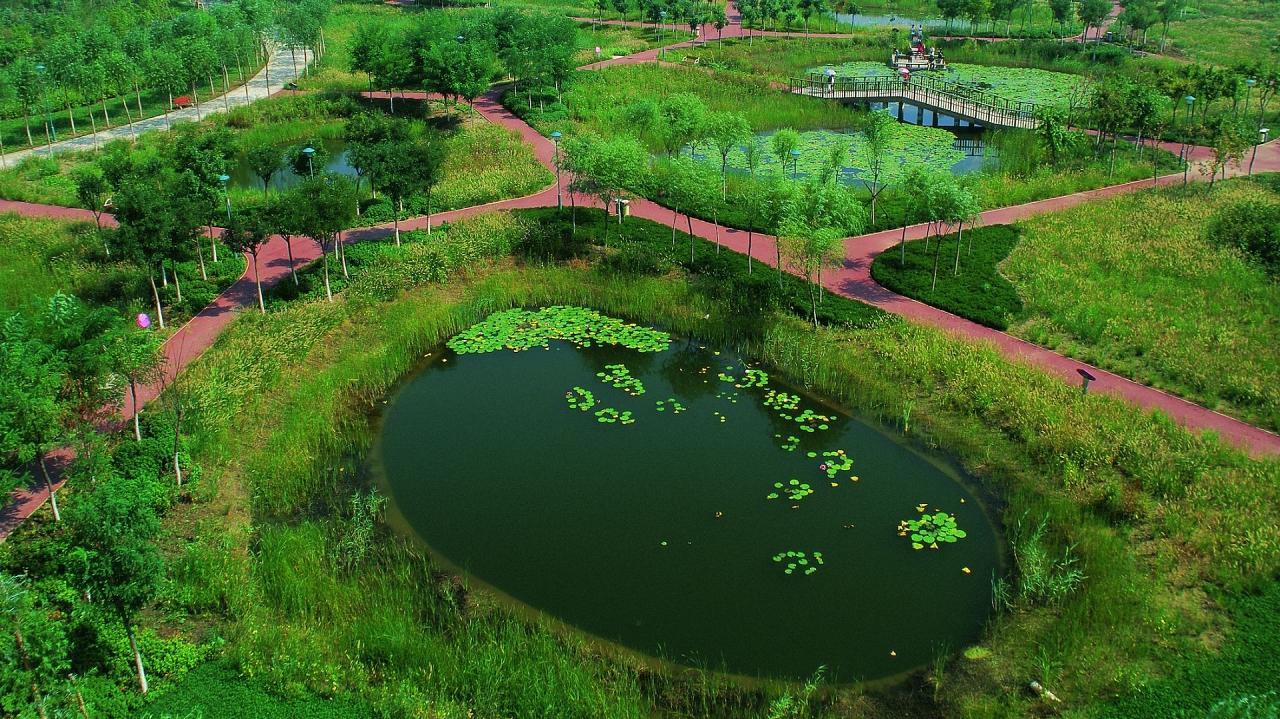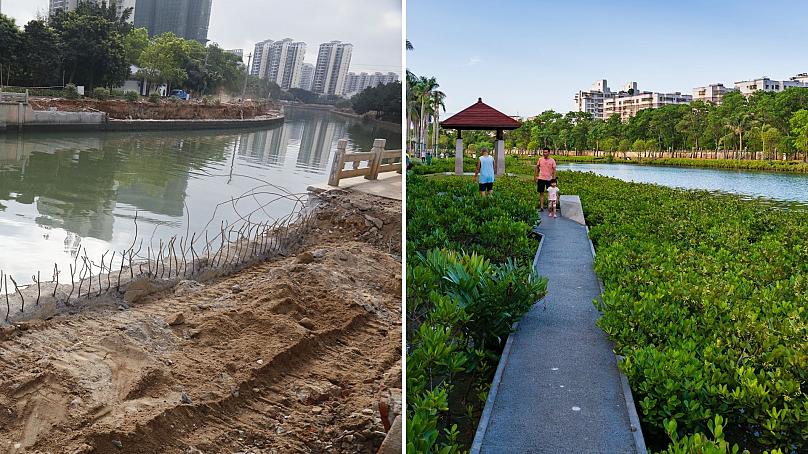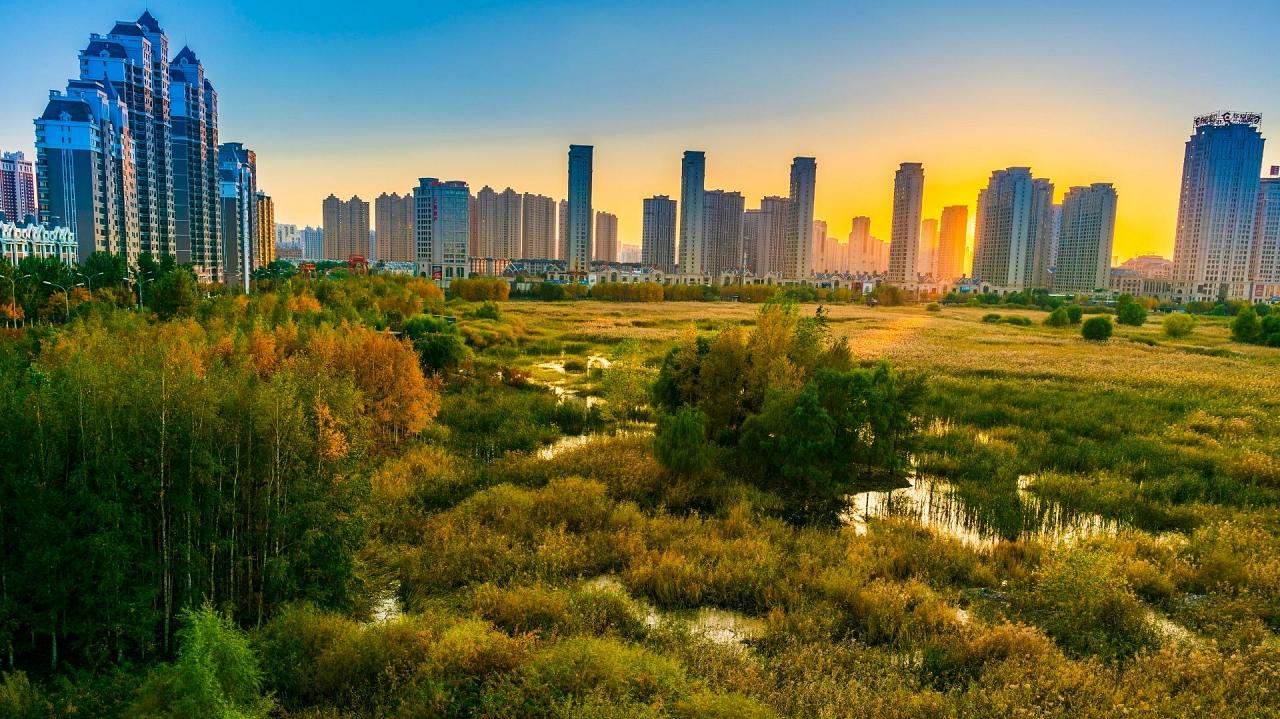Euronews. green: China's sponge cities are a ”revolutionary rethink“ to prevent flooding
The survival and development of human society depends on water. In fact, global water demand increased nearly eightfold between 1900–2010 as a result of factors like population growth, economic development and a shift in diet.
But in China, one of the world’s fastest growing economies, the vital resource is running out. The country’s 1.4 billion population needs water to thrive but it has become limited and unevenly distributed.
After decades of urbanisation and pollution, the country is now faced with both water shortages and flooding - only made worse by the effects of climate change.
And pollution is making water quality worse, meaning much of the water available is unusable. Insufficient management of local resources plays a part too.
North China is particularly impacted. It suffers from water shortages throughout the year, whereas South China, despite sufficient quantities, experiences only seasonal scarcity. One of the problems is that 80 per cent of water is concentrated in South China, yet the North is the core of national development.
Flooding is also a huge problem. Climate change is causing heavier rainfall and storms, affecting large areas of southern China including the Yangtze basin and its tributaries. In July 2021, the Chinese city of Zhengzhou, Henan, battled the heaviest rain in a millennia and devastating floods that killed at least 300 people and displaced 1.24 million residents, according to the NY Times.
So what is being done to address this water crisis and stop flooding from getting worse?
'Sponge cities' are trying to solve the water crisis
A ‘sponge city’ is a nature-based solution which uses the landscape to retain water at its source, slow down water flow and clean it throughout the process.
The focus is to retain rainwater in urban areas by waterproofing the paved floor so that part of it evaporates and the rest is gradually drained. As well as proofing the roads and pavements, more trees are planted and smart buildings are constructed to adapt to the city's sponge. This means roofs are covered in grass for greater absorption of water and buildings are also painted in light colours to reflect more heat instead of absorbing it.
The point is that this keeps floods at bay.
These are being built as new eco-cities and offer a strategy to incorporate the water cycle into town planning.
A sponge city is a nature-based solution to keep floods at bay.
The sponge city concept was proposed by Chinese researchers in 2013 and Professor Kongjian Yu is the mastermind behind it.
Yu is an ecological urban planner and landscape architect. He’s also a professor of landscape architecture at Peking University and the founder of the planning and design office Turenscape in Beijing.

Tianjin Wetland Park, China. Turenscape
Taking inspiration from international integrated urban water management (IUWM) strategies, including sustainable drainage systems (SuDS) seen in the UK or low-impact developments (LID) in the US, Yu’s sponge cities aim to control urban flooding, water pollution and recycle rainwater.
Scientifically speaking, the main features of the sponge city include being:
- Environmentally adaptive
- Systematic and comprehensive
- Environmentally friendly
“Though grey infrastructure of concrete, steel, pipes and pumps, can be necessary to solve urgent individual problems, it consumes huge amounts of concrete and energy, lacks resilience and often accumulates a higher risk of disaster. It breaks the connection between man and nature,” Yu tells Euronews Green.
“More than ever, facing global climate change and destructive industrial technologies, we have to rethink the way we build our cities, the way we treat water and nature, and even the way we define civilisation.
“Sponge Cities are inspired by the ancient wisdom of farming and water management that use simple tools to transform the global surface at a vast scale in a sustainable way.”

Haikou Meishe River - before and after shots of the 'sponge city' hotspot. Turenscape
Where are China’s sponge cities?
The 34-hectare ‘Qunli stormwater park’ in the city of Harbin in northern China is one example of a successful sponge city. It collects, cleanses and stores stormwater, while also protecting the native natural habitat and providing a beautiful green public space for recreational use.
“A sponge city follows the philosophy of innovation: that a city can solve water problems instead of creating them. In the long run, sponge cities will reduce carbon emissions and help fight climate change,” Qiu Baoxing, a former vice-minister of housing and urban-rural development, told the Guardian.
The Chinese government has already chosen 16 pilot cities and allocated to each of them between 400 and 600 million yuan (around €55 million) for the implementation of innovative water management strategies. These include Wuhan, Chongqing and Xiamen.
Ecological design can be about more than just green roofs and rain gardens - it can be a revolutionary rethink of the very texture of a city.
- Nanco Dolman
Royal Haskoning DHV

Qnuli Stormwater Park, China. Turenscape
With more and more demand growing for the sponge city model as we near 2030, 70 per cent of Chinese cities are scrambling to draw up plans, according to design company Turenscape.
“China is implementing these projects on the district and city scale, e.g. urban wetlands or eco-corridors,” Nanco Dolman, who works in the Water Resilient Cities group at the Dutch civil engineering firm Royal Haskoning DHV, tells Turenscape.
“It is showing that ecological design can be about more than just green roofs and rain gardens - it can be a revolutionary rethink of the very texture of a city.”
